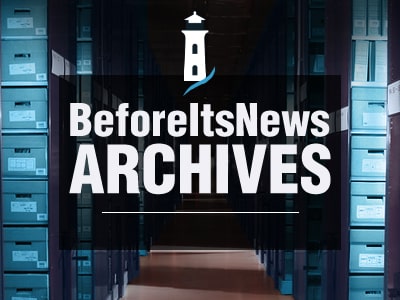Why Subsidizing Energy Efficency Is a Bad Idea

Many state utility regulators, policymakers, utilities, and others construct an orthodox and politically palatable argument that market failure justifies utility energy efficiency (EE) programs and that the vast majority of those programs would pass a cost-benefit test. (Incidentally, the alleged major culprits of market failure are energy consumers incapable of making the correct calculations from a societal perspective, or making decisions contrary to their self-interest. That so-called “EE gap” provides the raison d’etre for both government and utility subsidies to encourage the adoption of efficiency-promoting technologies.)
I have taken a contrarian view since the 1980s when I worked for the Illinois Commerce Commission and closely studied what was then known as energy conservation programs. I have always felt that both utility and government subsidized EE was a flawed idea, but one that sadly has had political appeal.
Electric and natural gas utilities together spend about $10 billion annually on energy efficiency. That sum is in addition to the billions of dollars the federal government spends, boosted substantially by the Inflation Reduction Act (e.g., an expansion of tax incentives for installing energy-efficient workspace upgrades and building energy-efficient homes). Finally, subsidized EE is a major component of state and federal governmental energy policies, driven in recent years by efforts to combat climate change.
Going back to 2009, the McKinsey & Co. consultancy estimated that adopting cost-effective EE investments in the United States could generate $700 billion in net private cost savings. Amory Lovins, cofounder and chairman emeritus of the Rocky Mountain Institute, once remarked that EE is the “lunch you are paid to eat.”
Adopting the label “no regrets,” policymakers frequently push actions that they endorse as unequivocally good—everyone wins, and no one loses. How often have we heard that? In truth, we see free lunches mostly going to individuals and groups who benefit at the expense of society. In the real world, “free lunches” that benefit society are as rare as rain in the Sahara. Even when given a free meal, one must listen to a (boring) sales pitch or speech. Only in fantasy land are socially beneficial “free lunches” ubiquitous.
The “free lunches” that EE advocates ascribe to their pet programs should seem suspicious to anyone after only a little thought. They certainly do to many analysts who have seriously studied the benefits and costs of EE initiatives. If the efforts are such a good deal, why must government mandate or utilities subsidize them? Why aren’t energy consumers taking advantage of the large benefits that EE supposedly offers them? Are they that irrational and unaware of the benefits from EE, or, more accurately, do consumers just find better ways to invest their limited monies? Something that is engineeringly feasible or efficient is not necessarily economically efficient.
I am skeptical for two basic reasons. First, the idea that markets are less than perfect should not infer that intervention in the form of utility subsidies or government mandates benefits society. One of the major errors in government actions in a wide array of areas starts with the premise that since markets aren’t perfect, the government should intervene. More often than not, such intervention results in a higher cost to society than the benefits received. The concept that is often ignored in public policy debate is called “government failure.”
The reality is that all markets are “imperfect” in the sense that consumers lack perfect information or don’t always process the information they have rationally. If one relies on that criterion for intervention, then government meddling to refashion consumer behavior could be justified in virtually all markets.
For example, some EE advocates point to the lack of access to financing as a reason for underinvestment in EE. They incorrectly widen the definition of market failure beyond its intended definition. It may very well be that energy consumers prefer investing in other things, like home repair, a new car, or college, rather than EE. And that’s not because of market failure.
One glaring problem is that ostensibly objective analysis of specific EE initiatives often reaches different conclusions from evaluations prepared either by or for utilities. Specifically, those evaluations generally yield results that are far more optimistic about energy savings and cost-effectiveness than subsequent academic, peer-reviewed studies of the programs once they are in place.
Why is that so, and whose results are more credible? Most utilities or their evaluators fail to apply the best analytical tools to their evaluations of EE programs. Those tools include randomized trials and quasi-experimental designs to measure energy savings and account for consumer behavior. The problem with other approaches is that they are unreliable—in some instances grossly flawed—in measuring the actual energy savings from individual EE programs.
Another evident reality is that utilities have a self-interest in portraying their EE programs as cost-effective and, therefore, worthy of favorable treatment by regulators (e.g., allowing the utility to earn a profit). We cannot forget that regulators and policymakers themselves receive kudos from the public for supporting subsidies whose intent is to tackle climate change, in addition to promising reduced utility bills. Gosh, who can be opposed to that?
Going back, academic reviews of EE programs conclude that such programs are not the “low-hanging” fruit that many people believe them to be. They show that utilities grossly overstate energy savings from EE programs because they rely on engineering estimates that fail to account for consumer behavior (the so-called “rebound effect” or price-elasticity effect) in using, say, their higher energy-efficient air conditioners and heating systems more intensively because of lower operating costs. (Incidentally, as I was told, after California mandated low-flow toilets and low-flow showers, people started to flush two or three times and take long showers or baths. I am sure that proponents of the mandate failed to consider these changes in consumer behavior when forecasting the water savings.)
Studies also find “free riders” participating in EE programs. They are individuals who would have purchased lower energy-use appliances or heating and air conditioning systems in the absence of the EE program. It would be wrong to count their energy savings as real benefits, which can show a program as cost-effective when, in fact, it is not. Some studies have shown that participants in utility EE programs are primarily consumers who are wealthier, own their own homes, and are better informed about and attentive to energy costs.
This suggests that these subsidies are poorly targeted at the market failures they were designed to address. The subsidy consumers receive for their EE investment is simply a pure transfer from other utility customers (who ultimately pay for the subsidy); in the case of government subsidies, the transfer runs from taxpayers to recipient energy consumers, who may be willing and financially able to make the EE investment without the subsidy.
Studies also note that government and utilities often fail to consider ”hidden costs” for consumers from the time and effort spent on both energy audits and investments. According to some academic studies, the combination of these factors has understated the true costs of EE programs by as much as 50% or more. Given the exaggerated energy savings and understated costs, it is highly conceivable that many EE initiatives found cost-beneficial by the utility or the government are actually harmful.
As an illustration, a widely held view is that federally funded residential weatherization programs have produced large and cost-effective savings for low-income households. However, a 2015 study by Meredith Fowlie, Michael Greenstone, and Catherine Wolfram and a 2016 study by Joshua Graff Zivin and Kevin Novan provide empirical evidence to the contrary. They find energy-savings projections to be grossly high and the overall net benefits to participating households to be negative in many instances.
In conclusion, policymakers should ask the necessary question: why should utilities and the government spend any money on EE programs when their customers and taxpayers are capable of making rational decisions for themselves? Is it equitable and good public policy to compel utility customers and taxpayers to pay for EE initiatives that benefit a relatively few when some of those would have invested in EE without subsidies? I have argued that the answer is no. It’s high time to end those initiatives for the sake of the public good.
The post Why Subsidizing Energy Efficency Is a Bad Idea appeared first on The Beacon.
Source: https://freedombunker.com/2024/11/21/why-subsidizing-energy-efficency-is-a-bad-idea/
Anyone can join.
Anyone can contribute.
Anyone can become informed about their world.
"United We Stand" Click Here To Create Your Personal Citizen Journalist Account Today, Be Sure To Invite Your Friends.
Before It’s News® is a community of individuals who report on what’s going on around them, from all around the world. Anyone can join. Anyone can contribute. Anyone can become informed about their world. "United We Stand" Click Here To Create Your Personal Citizen Journalist Account Today, Be Sure To Invite Your Friends.
LION'S MANE PRODUCT
Try Our Lion’s Mane WHOLE MIND Nootropic Blend 60 Capsules
Mushrooms are having a moment. One fabulous fungus in particular, lion’s mane, may help improve memory, depression and anxiety symptoms. They are also an excellent source of nutrients that show promise as a therapy for dementia, and other neurodegenerative diseases. If you’re living with anxiety or depression, you may be curious about all the therapy options out there — including the natural ones.Our Lion’s Mane WHOLE MIND Nootropic Blend has been formulated to utilize the potency of Lion’s mane but also include the benefits of four other Highly Beneficial Mushrooms. Synergistically, they work together to Build your health through improving cognitive function and immunity regardless of your age. Our Nootropic not only improves your Cognitive Function and Activates your Immune System, but it benefits growth of Essential Gut Flora, further enhancing your Vitality.
Our Formula includes: Lion’s Mane Mushrooms which Increase Brain Power through nerve growth, lessen anxiety, reduce depression, and improve concentration. Its an excellent adaptogen, promotes sleep and improves immunity. Shiitake Mushrooms which Fight cancer cells and infectious disease, boost the immune system, promotes brain function, and serves as a source of B vitamins. Maitake Mushrooms which regulate blood sugar levels of diabetics, reduce hypertension and boosts the immune system. Reishi Mushrooms which Fight inflammation, liver disease, fatigue, tumor growth and cancer. They Improve skin disorders and soothes digestive problems, stomach ulcers and leaky gut syndrome. Chaga Mushrooms which have anti-aging effects, boost immune function, improve stamina and athletic performance, even act as a natural aphrodisiac, fighting diabetes and improving liver function. Try Our Lion’s Mane WHOLE MIND Nootropic Blend 60 Capsules Today. Be 100% Satisfied or Receive a Full Money Back Guarantee. Order Yours Today by Following This Link.






